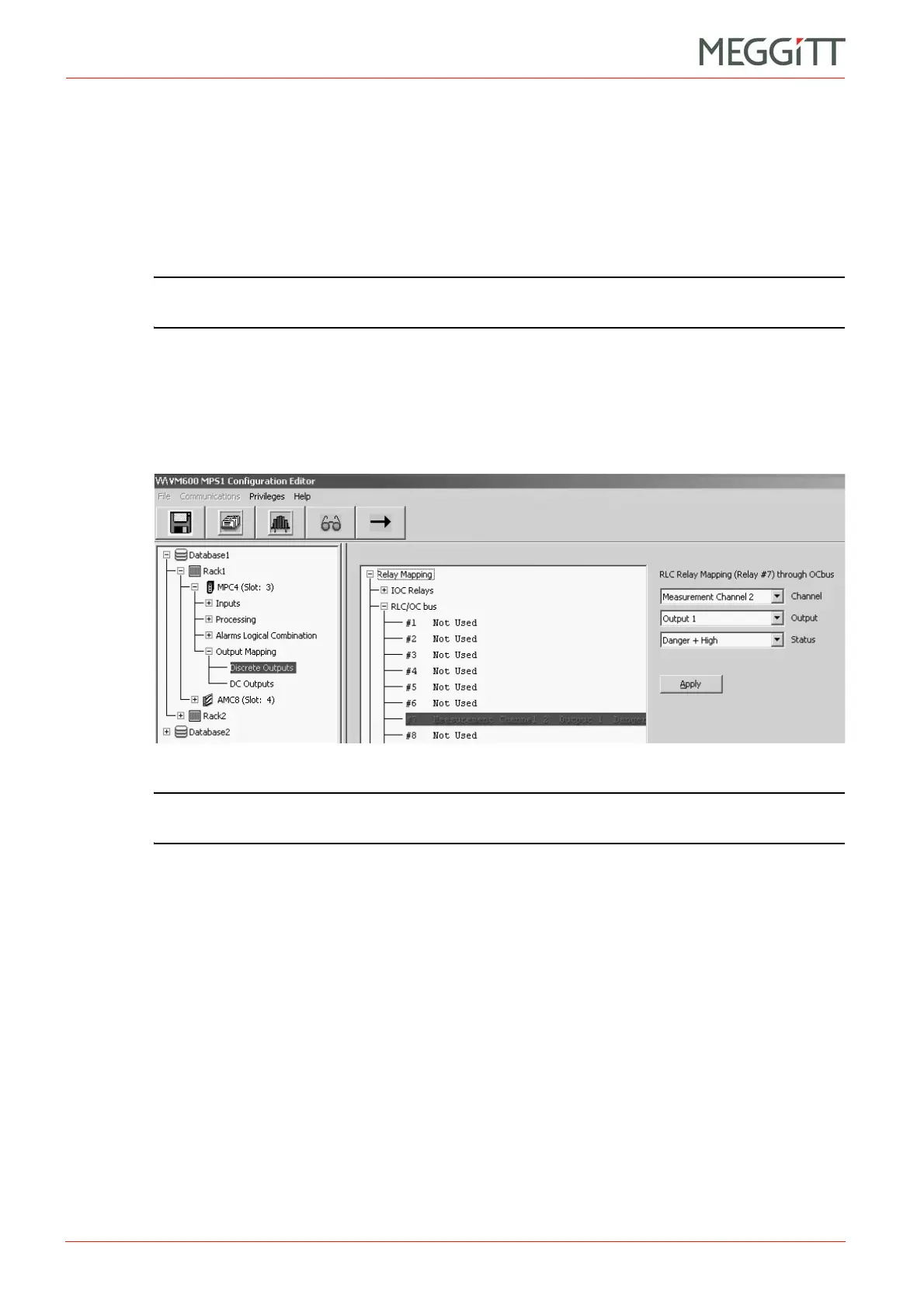9 - 46 VM600 MPS hardware manual (standard version) MAMPS-HW/E
Edition 17 - February 2018
Assigning alarm signals to relays on the RLC16 card
CONFIGURATION OF MPC4 / IOC4T CARDS
9.12.1.1 Configuration procedure (OC Bus)
To configure a particular relay on the RLC16 card using the OC Bus, proceed as follows:
1- Consult Table 9-7 (this lists the jumpers associated with each relay).
2- For the relay in question, set the appropriate jumper on the RLC16 card.
3- Set the appropriate jumper to configure the relay as normally energised (NE) or normally
de-energised (NDE).
NOTE: Make sure that either the NE or the NDE jumper is set. You cannot set both of them
together.
4- Using the VM600 MPS software, select the Discrete Outputs node (a child of the
Output Mapping node) in the tree structure (left). Then expand the RLC/OC bus node
in the main window (right) and select the relay in question (between 1 and 16). See
Figure 9-32.
5- Configure the Channel, Output and Status fields of this window.
NOTE: Refer to the relevant manual for further information: VM600 MPS1 software
manual or VM600 MPS2 software manual.
Configuration example
A user wants to assign the alarm signal “Danger+" generated on Output 1 of Channel 2 of a
given MPC4 card to Relay 7 on the RLC16 card. In addition, the user wants Relay 7 to be in
a normally energised (NE) state.
Relay 7 is selected by placing jumper J31 on the RLC16 card (see Table 9-7).
(Note that this operation actually selects OC Bus Line 6. This information, however, does not
normally concern the user, as the VM600 MPS software takes it into account.)
Placing jumper J88 ensures that Relay 7 is normally energised (see Table 9-7).
The user must then use the VM600 MPSx software to select Relay 7 from the 16 relays
available in the RLC/OC bus node. Then, the Danger+ alarm for Output 1 of Channel 2 can
be assigned to this relay (see Figure 9-32).
Figure 9-32: VM600 MPS software window to configure the OC Bus
